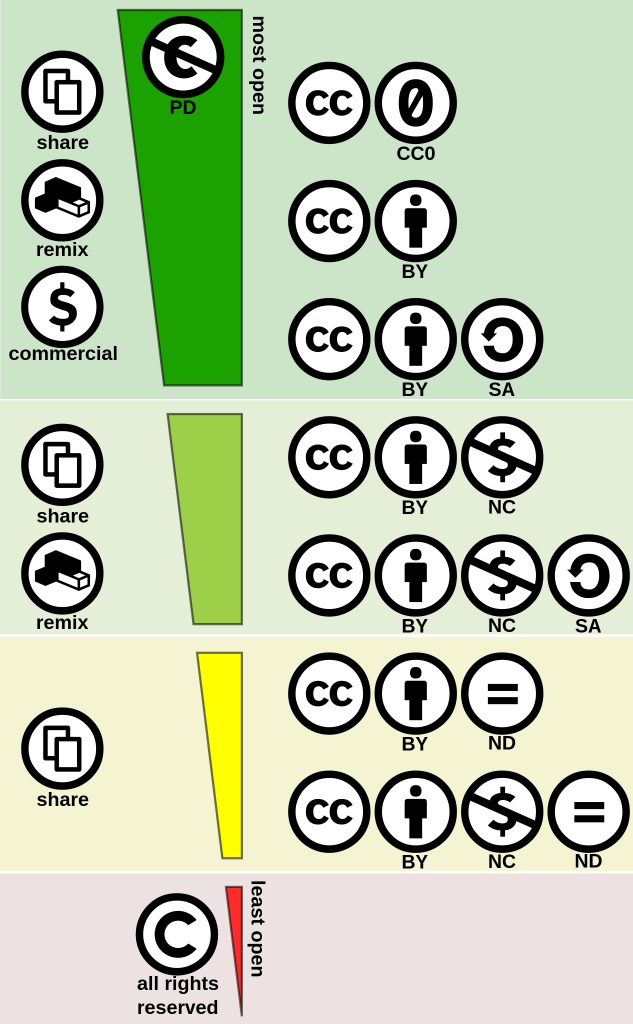12.3 Navigate Copyright, Creative Commons, and the Continuum of Openness Online
Gaining knowledge about and experience navigating copyright, public domain, Creative Commons and more access complexities and considerations will be extremely helpful for your digital history projects if you wish to share them beyond this subject and make history as a historian or GLAM sector professional.
It is very important to think early on about what records are likely to be available for you to use online and what ones might not be available as this will help you determine your project topic, scope, and format. Copyright is one of the main considerations that determine what is available online, but other very important considerations include: privacy, cultural sensitivity, accessibility, and project priorities, funding, or sponsorship.
Watch this short (approximately 10 minute) presentation from Sari Braithwaite – a historian by day and filmmaker by night – on how she has creatively, courageously, and carefully navigated copyright considerations as a historian and creator:
In this essay How to think left on copyright, Lizzie O’Shea illustrates the limits of Copyright law in Australia and beyond. O’Shea argues that it tends to help big publishers and corporations more than individual or community creators. She highlights the power and potential of Creative Commons and other licenses as alternatives that give creators more control over how their intellectual property can be used.
Creative Commons licenses
In Australia, there are six standard licenses, each permitting material to be used in a different way.
Read the following to find out more about Creative Commons from the Creative Commons website.
Watch this short video on Creative Commons licenses to help you understand them more:
This Creative Commons License spectrum provides a visual representation of the different licenses and how you can use content which uses these licenses along a continuum of openness:

Public Domain material is the most open and has the least restrictions on how you can use it. Check out the Australian Copyright Council Factsheet: Duration of Copyright to find out when material enters the Public Domain as this may help you choose a research topic and plan your research – for example: you may want to select a time where you know public domain material should be easily accessible online. If something is in the public domain, it states: “Public domain” or “No rights reserved” or “CCO”.
If you decide not to publish your work, you can use more material for private research or study under fair dealing. Find out more about Fair dealing in the Fair Dealing: What Can I Use Without Permission – ACC – INFO079 fact sheet by the Australian Copyright Council.
Libraries and archives in Australia frequently stress that digitising material does not change the copyright status of material. In fact, several have adapted the following statement in response to the question Do I need the Library’s permission as well as the copyright owner’s permission? from the National Library of Australia, so it is a good one to be familiar with.
Activity: Quick Creative Commons and Public Domain image searching
These activities will help increase your familiarity with Creative Commons and Public Domain image searching and give you a broad idea about what is out there on your topic that you can use in published work.
You will need to dig deeper in the archives, but these sources covered are good starting points for your research and what you find (or do not find) here may help you decide on the scope and/or format of your search project.
Record links and information about the images you’ve found as you go through it and download as a document after you complete it.
You may find it helpful to use Deakin University Library’s Creative Commons Attribution Builder to learn how to appropriately attribute any images you use.

